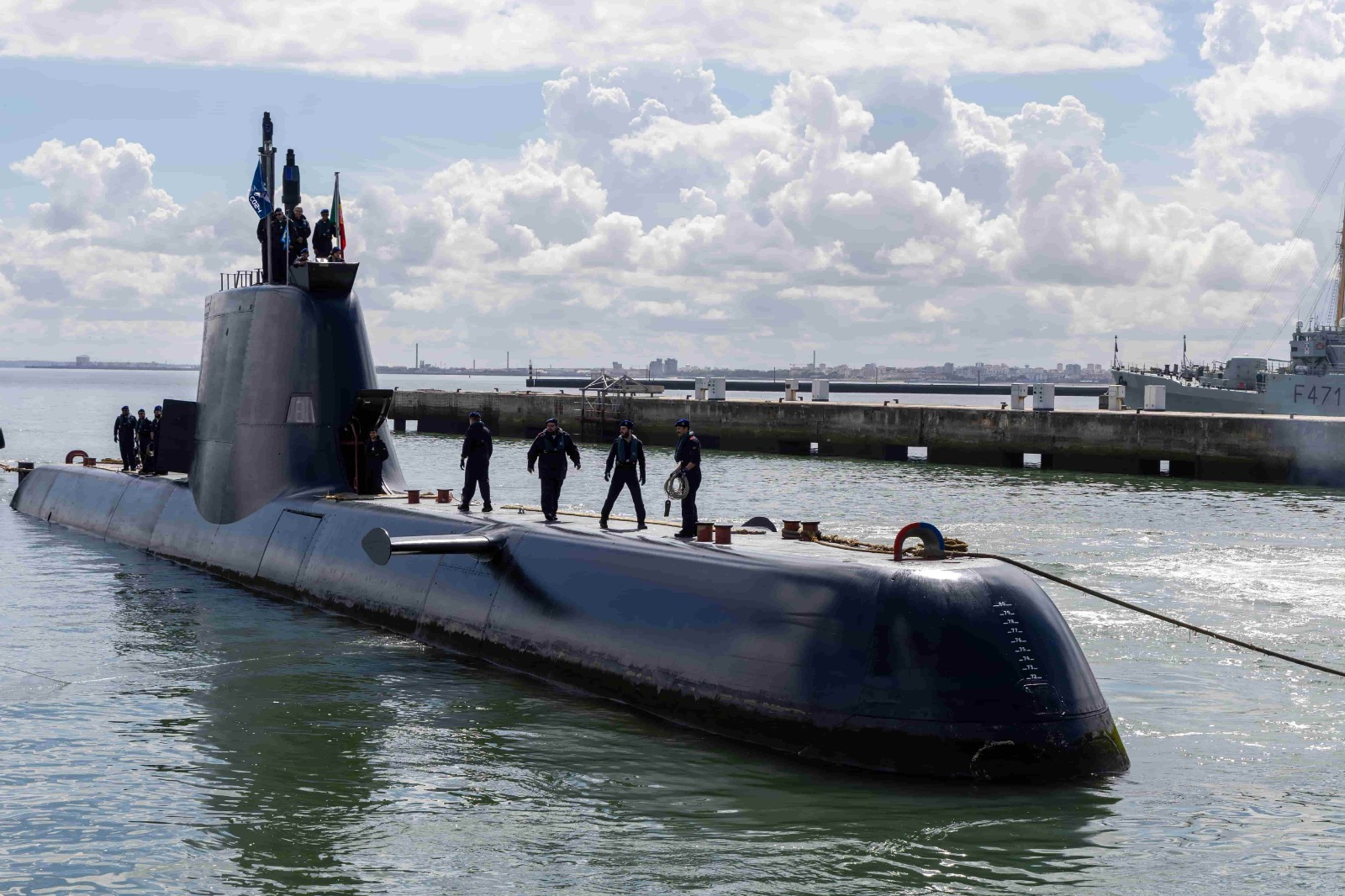Portuguese Trident class attack submarine NRP Arpão has returned to Portugal following a successful deployment under NATO’s Operation Brilliant Shield. Arpão is the first Portuguese submarine to navigate below Arctic ice, in a mission aimed at deterrence and defence of the Euro-Atlantic area. This was a significant achievement for the Portuguese Navy, made possible with the support from the Allied navies of Canada, Denmark, and the United States. Arpão is equipped with advanced sonar and communications systems, in order to carry out vigilance, patrol and reconnaissance missions. During this mission, Arpão was tasked with monitoring non-NATO military platforms, both surface and submarines, known to operate in this region. Arpão returned to her home base in Alfeite, Lisbon, after a 70-day deployment. In attendance were the Portuguese Defence Minister Dr Nuno Melo, the Chief of the Portuguese Navy Admiral Gouveia e Melo and the Commander of NATO Submarines, Rear Admiral Thomas Wall.
“We have successfully achieved our objectives of surveillance and patrol in the North Atlantic, demonstrating the capabilities of this type of conventional submarine in Arctic conditions. Our ability to operate across the entire spectrum of the Atlantic is a testament to our commitment to supporting the operations of the Atlantic Alliance,” said Portuguese Navy Commander Taveira Pinto, who commanded the submarine.
NATO’s submarine fleet significantly reinforces the Alliance’s strategic and tactical advantage while patrolling the Atlantic and High North, the Baltics and the Mediterranean Sea, and remains pivotal to the defence of the Alliance. The strength of NATO’s submarine force lies in multinational collaboration. NATO member states frequently conduct joint exercises and training missions to enhance interoperability and cohesion. Exercises such as Dynamic Mongoose and Dynamic Manta sharpen submarine capabilities, including hunting for vessels deployed by Russia and other nations. Dynamic Monarch, held every three years, enhances multinational cooperation between Allies, as they practice the complex location and rescue of distressed submarines. The core strength of NATO’s submarine fleet lies in its technological sophistication. Allied members including the United States, United Kingdom, France and Germany lead the world in submarine technology. Their submarines are equipped with advanced stealth capabilities, making them nearly undectable to enemy forces.
The incorporation of nuclear propulsion in many NATO submarines, such as the US Navy’s Virginia Class, France’s Suffren class and the Royal Navy’s Astute Class, give them the tactical edge. Because they can generate the vessel’s own air and water, they can operate underwater for extended periods, allowing for greater endurance and operational reach. Armed with cutting-edge weaponry, including torpedoes, cruise missiles and advanced mine-laying systems, these submarines are capable of striking targets at distance and with precision. Sophisticated sonar and communication systems ensure NATO submarines can conduct reconnaissance, maritime surveillance and intelligence gathering tasks. They provide critical support to surface fleets and boost Allied overall maritime dominance. They also serve as the cornerstone of NATO’s strategic deterrence. NATO’s submarine-based nuclear deterrence, through the United States’ Ohio Class, France’s Le Triomphant Class and the United Kingdom’s Vanguard Class submarines, forms a crucial part of the Alliance’s nuclear triad.
NATO’s submarine fleet is operationally versatile, performing a wide range of missions and tasks. They include anti-submarine warfare (ASW), anti-surface warfare (ASuW), special operations support, and maritime interdiction. Their ability to operate independently or in coordination with other naval and air assets enhances NATO’s operational effectiveness across various domains. In the realm of ASW, NATO submarines play a crucial role in protecting Allied shipping lanes and ensuring the security of maritime supply routes. The ongoing threat from adversarial submarines, particularly from Russia, necessitates robust ASW capabilities. NATO submarines regularly team up with Maritime Patrol Aircraft and surface ships to hunt for enemy vessels with very little information. NATO’s submarines, equipped with advanced sonar systems and ASW weaponry, are at the forefront of countering these threats, ensuring the safety and security of critical maritime infrastructure. As global security challenges evolve, member states continue to invest in submarine technology, providing NATO with an unparalleled advantage in maintaining maritime security and deterrence.











